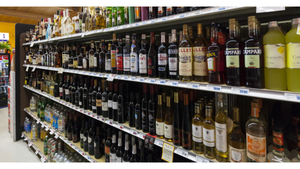SOME IDEAS FOR CREATING A RICHER SHOPPING EXPERIENCE 2004-02-09 (1)
The connection between independent grocers and health-labeled foods may not be obvious at first; indeed, it's not so much about each of them as what the pairing itself represents.First, a look at numbers. Chain supermarkets, with just over 21,000 stores in the United States, operate roughly twice as many units as independent operators, who have 11,500 stores. And given the direction this business
February 9, 2004
Robert Vosburgh
The connection between independent grocers and health-labeled foods may not be obvious at first; indeed, it's not so much about each of them as what the pairing itself represents.
First, a look at numbers. Chain supermarkets, with just over 21,000 stores in the United States, operate roughly twice as many units as independent operators, who have 11,500 stores. And given the direction this business has been travelling these past few years, the latter number remains in constant danger of diminishing.
Yet, independents are still around because they cater to a customer base that refuses to sign on wholesale to the generic shopping experience dictated by so many of the big players. Their very size allows them to react more quickly to nuances in customer demands, and reset merchandising schemes at a faster pace. There aren't three division vice presidents to go through, and no one is waiting for headquarters to send down the planogram.
The National Grocers Association, which is hosting its Supermarket Synergy Showcase 2004 this week in Las Vegas, includes two themes in its Ten Keys to the Future Success of the Independent Retailer: "Reinvent the Supermarket as a Lifestyle Destination Center" and "Win Back Center Store Sales." This is where the connection can be made between independents and labels.
For example, take the emergence of a new generation of labeling that emphasizes the healthy ingredients or components of a food item. These are usually manufacturer-initiated efforts that end up on store shelves, either mixed in with competing products or segregated in a health and wellness display. Retailers eager to carve out a higher profile for themselves in a crowded market might decide to use this trend as a springboard for comprehensive educational campaigns that bring shoppers in, as students, to learn from a qualified staffer how to shop the store. That's what Ingles Markets, Asheville, N.C., has been doing through Leah McGrath, the chain's registered dietitian.
Or, operators can help customers make smarter decisions by showing them what to look for when they find a product they're interested in and thinking of purchasing. Wegmans Food Markets, Rochester, N.Y., is doing it with an in-store, low-carb pamphlet that respects a customer's intelligence -- it simply demonstrates how to shop the store to find what he or she wants. It doesn't suggest what they buy.
The bottom line is that, sure, supermarkets primarily exist to sell food. However, independent grocers are in perhaps the strongest position to make their stores more than just merchandising warehouses. Their size gives them agility to adapt to fast breaks in the market and consumer trends; they can be quicker to market with "value-added" components that connect with consumers and give the actual shopping "experience" some real weight and importance; and they are a better outlet for smaller manufacturers when hot trends like low-carb dieting come along. The amount of product these niche suppliers turn out could never satisfy the volume demands of a national chain, but they could do nicely for smaller operators.
About the Author
You May Also Like




